The Integration and Application Network in 2017
Bill Dennison ·The Integration and Application Network (IAN) had an eventful and action-packed year. Several major transitions occurred during 2017: we moved into a new Annapolis office, developed our first IAN Strategic Plan and initiated our self-reflective IAN report cards. IAN staff taught or co-taught four courses:
- Science for Environmental Management
- Coupled Human and Natural Systems
- Transdisciplinary Science for Environmental Problem Solving
- Healthy Rivers for All—Setting the Course for Sustainability with River Basin Report Cards.
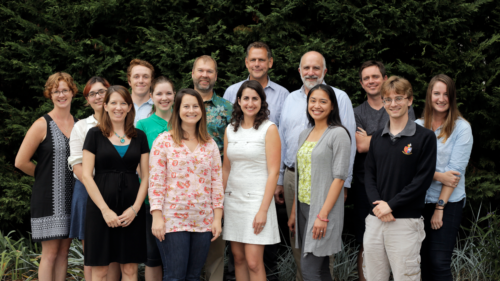
IAN Publications
IAN staff traveled extensively to co-design and co-produce a variety of important products with diverse partners. International travel destinations included Australia, Brazil, China, France, Guam, Mongolia, and Saipan. Domestic travel destinations included Arizona, Hawaii, Texas, Florida, Massachusetts, Michigan, Minnesota, New York, Oregon, Rhode Island, South Carolina, Tennessee, Virginia, and West Virginia.
We also published peer review publications in the scientific literature. Two peer review publications appeared in the journal Bioscience:
- “Ecological forecasting and the science of hypoxia in Chesapeake Bay” (Testa et al., 2017)
- “Submersed aquatic vegetation in Chesapeake Bay: Sentinel species in a changing world” (Orth et al., 2017)
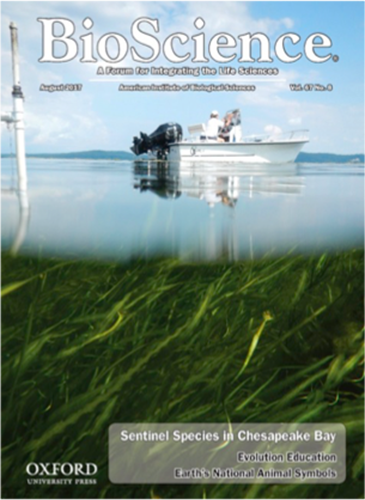
Another paper appeared in the journal Global Change Biology: “Multiple stressors threaten the imperiled coastal foundation species eelgrass (Zostera marina) in Chesapeake Bay” (Lefcheck et al., 2017). Another published paper on hypoxia resulted from a course that IAN staff co-taught in 2016, and submerged aquatic vegetation (SAV) papers were the result of a synthesis project (SAV SYN) that IAN facilitated.

Significant IAN Press publications appeared as well. Two booklets to help people generate environmental report cards were posted: A Practitioner’s Guide to Developing River Basin Report Cards (Costanzo et al., 2017) and Using Indicators for Improved Water Resources Management: Guide for Basin Managers and Practitioners (Bertule et al., 2017). In addition, a suite of other newsletters and booklets were produced, bringing the total IAN Press publications to over 500.
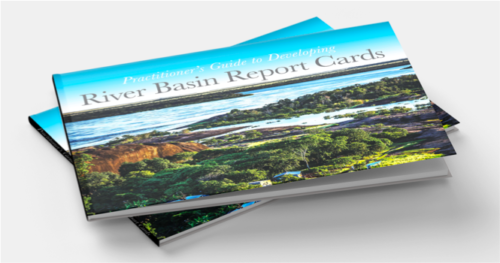
IAN Collaborations and Conferences
IAN staff were active participants in 11 conferences throughout 2017:
- Coastal and Estuarine Research Federation conference in Providence, Rhode Island
- Science of Science Communication III in Washington, D.C.
- River Rally 2017 in Grand Rapids, Michigan
- Atlantic Estuarine Research Society conference in St. Mary’s, Maryland
- Sharing Water conference in Washington, D.C.
- Belmont Forum conference in Sao Paulo, Brazil
- Great Lakes Restoration Conference in Buffalo, New York
- One Gulf Summit in Houston, Texas
- Chesapeake Watershed Forum in Shepherdstown, West Virginia
- Citizen Science Association conference in St. Paul, Minnesota
- Maryland Water Monitoring Conference in Linthicum, Maryland
The UMCES-WWF partnership we helped launch in 2015 continues to thrive. We developed a name for it called “Healthy Rivers for All,” which fulfilled our collective goal. We finalized our two co-produced booklets, the Practitioner’s Guide and the Indicators Guide, started mass producing the “Get the Grade” game, and initiated a new report card project in Mongolia. We also started planning for report card projects in China and Zambia.
The UMCES-USGS partnership that was launched in 2015 continues to thrive as well. We completed our series of eight regional workshops about ecological drought across the United States and published eight summary newsletters. We held a synthesis workshop at the National Socio-Environmental Synthesis Center (SESYNC) and initiated some synthesis documents and peer review papers. We also planned two additional workshops that focus on ecodrought on Pacific islands and Caribbean islands for 2018.
IAN Growth
IAN entered the video age in 2017, incorporating the talents of a new IAN employee Jamie Currie. Using the giant computer monitor in the new UMCES Annapolis Office, we produced a series of video talks. We also produced a couple of karaoke songs, complete with vocals by Kat Parsons and a BOUNCING BALL by Jamie Currie. The “Riversymposium Club Band” was used at the International Riversymposium in Australia and the “Forum from Belmont” used at the Belmont Forum conference in Brazil. Jamie Currie also created a Vimeo Moving Image Library for short Chesapeake Bay video clips. We also invested in high quality video equipment and plan on continuing to develop our video capacity for science communication.
We have added a diversity of IAN staff in 2017. For the UMCES @ Chesapeake Bay Program, the following staff started in 2017: Kevin Asplen (cloud computing), Dan Brellis (web development), Aera Hoffman (user experience), and Garrett Pegg (web intern). For the IAN Bathhouse gang, Jamie Currie (multimedia) and Emily Nastase (science communication) were added. Claire Sbardella (blogs and Facebook) joined the UMCES Annapolis Office as did Trish Summers (grants administration).
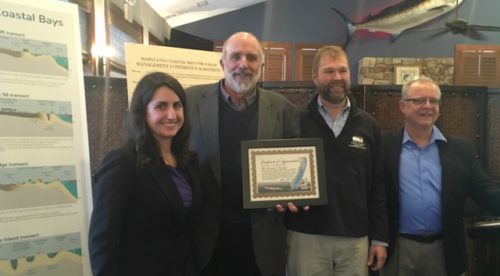
We had a few IAN staff transition to new venues as well. Jane Hawkey retired from her many years with the University of Maryland Center for Environmental Science, but is going to continue to work contractually part time. Jane Thomas returned to her Aussie roots and moved to Charles Darwin University in Australia where she is a Science Communicator. Simon Costanzo is moving to Australia in early 2018, but will continue to work for IAN remotely. In all cases, we took the opportunity to celebrate their IAN contributions with parties and presents.
On a personal note we had some great things to celebrate. For example, three IAN staff got married in 2017. IAN received a Gold Star Partnership Award from the Maryland Coastal Bays Program. In addition, Bill Dennison received the Margaret A. Davidson Stewardship Award from the Coastal and Estuarine Research Federation. We made a concerted effort to improve our professional development and we made it a point to create opportunities for casual interactions. IAN continues to be a productive workplace that is also a fun place to work with talented people. We are looking forward to an exciting 2018.
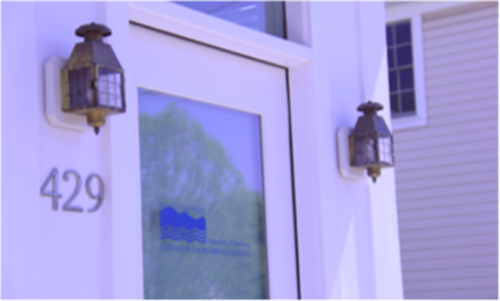
References:
- Bertule, M, PK Bjornsen, SD Costanzo, J Escurra, J Freeman, L Gallagher, RH Kelsey, D Vollmer. 2017. Using Indicators for Improved Water Resources Management—Guide for Basin Managers and Practitioners. IAN Press, Cambridge, MD. 82 pp.
- Costanzo, SD, C Blancard, S Davidson, WC Dennison, J Escurra, S Freeman, A Fries, RH Kelsey, K Krchnak, J Sherman, M Theime, V Vargas-Nguyen, V. 2017. Practitioner’s Guide to Developing River Basin Health Report Cards. IAN Press, Cambridge, MD. 82 pp.
- Lefcheck, JS, DJ Wilcox, RR Murphy, SR Marion, RJ Orth. 2017. Multiple stressors threaten the imperiled coastal foundation species (Zostera marina) in Chesapeake Bay, USA. Global Change Biology 23: 3474-3483.
- Orth, RJ, WC Dennison, JS Lefcheck, C Gurbisz, M Hannam, J Keisman, JB Landry, KA Moore, RR Murphy, CJ Patrick, J Testa, DE Weller, DJ Wilcox. 2017. Submersed aquatic vegetation in Chesapeake Bay: Sentinel species in a changing world. Bioscience 67: 698-712.
- Testa, JM, JB Clark, WC Dennison, EC Donovan, AW Fisher, W Ni, M Parker, D Scavia, SE Spitzer, AM Waldrop, VMD Vargas, G Ziegler. 2017. Ecological forecasting and the science of hypoxia in Chesapeake Bay. Bioscience 67: 614-626.
About the author
Bill Dennison

Dr. Bill Dennison is a Professor of Marine Science and Vice President for Science Application at the University of Maryland Center for Environmental Science.

